Stay updated with yoga news, tips, and strategies. Learn how to become an online yoga teacher, attract clients, and become a director of your yoga business. Sign up to our newsletter for the latest insights straight to your inbox!
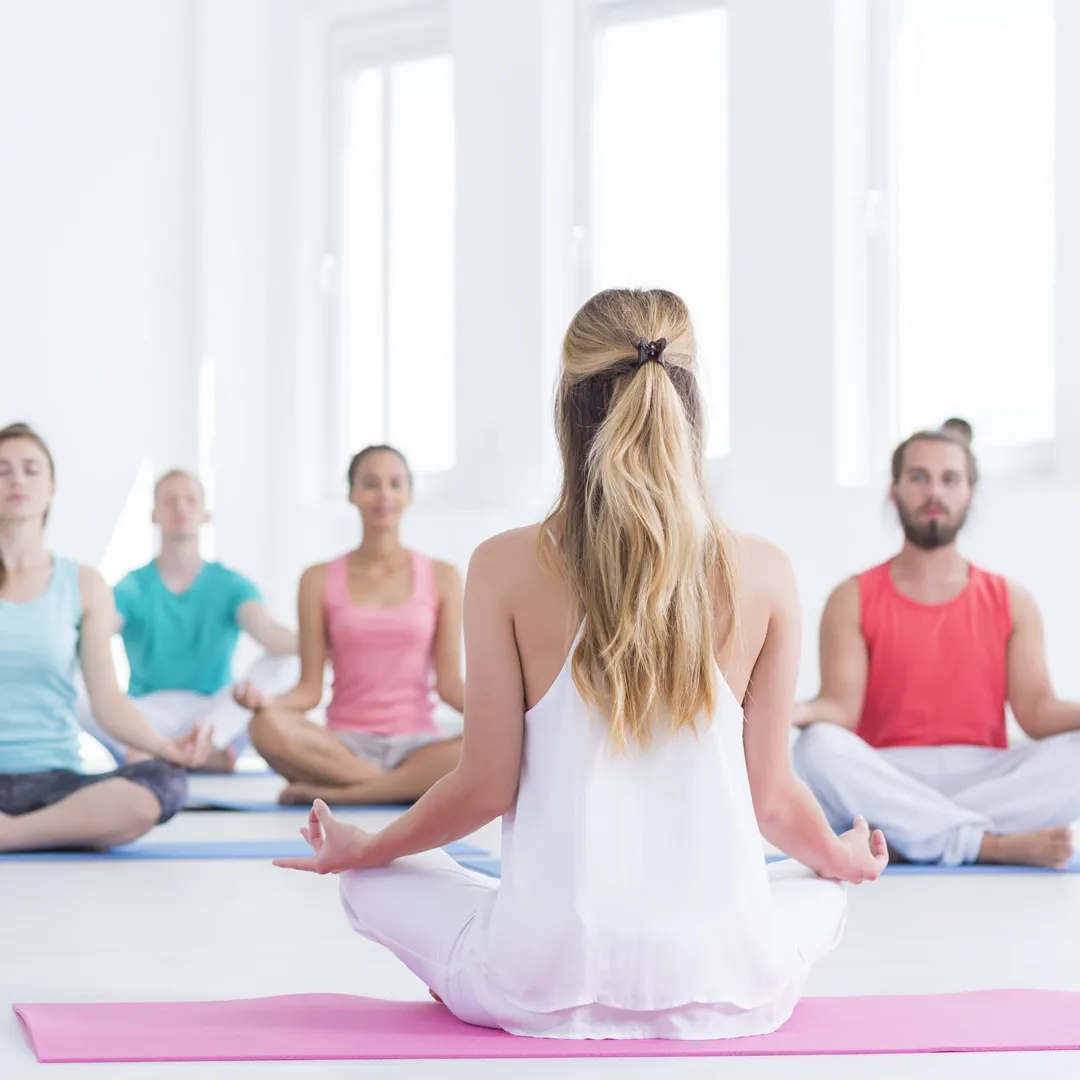
As a new yoga teacher, it can feel overwhelming as you begin to teach your own classes. You could be experiencing a variety of emotions across the spectrum as you enter into this new chapter of your life. Teaching yoga, and teaching in general, could be brand new for you. New things tend to push us outside of our comfort zone and with that could...
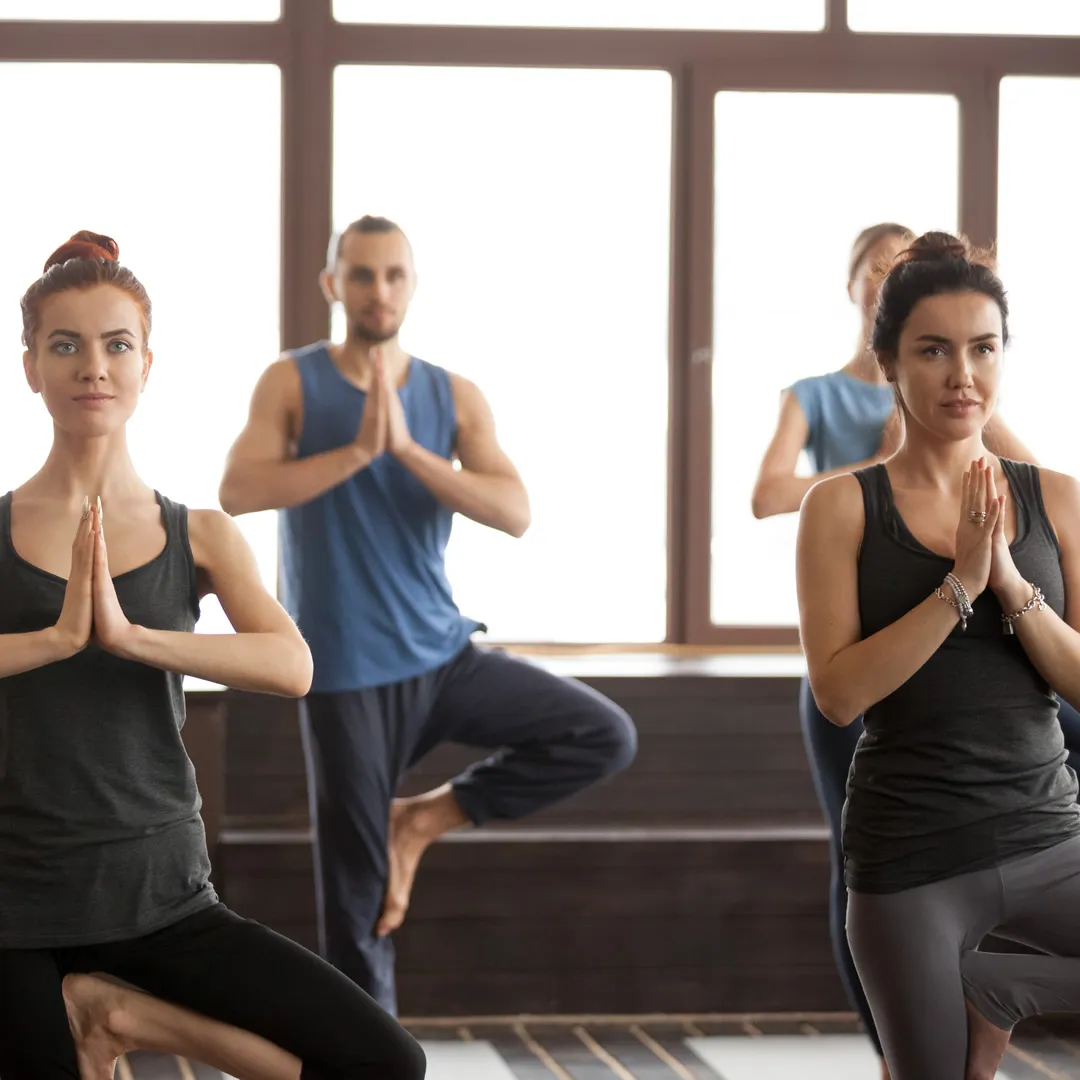
The Yoga Teaching Industry is growing at a phenomenal rate and sometimes it can be hard to keep up and navigate the industry when it comes to the latest requirements, news, software and idea’s - generally speaking a way to move your yoga business forward.
We launched Savvy Yoga Teacher as an online resource for those in the Yoga industry where...
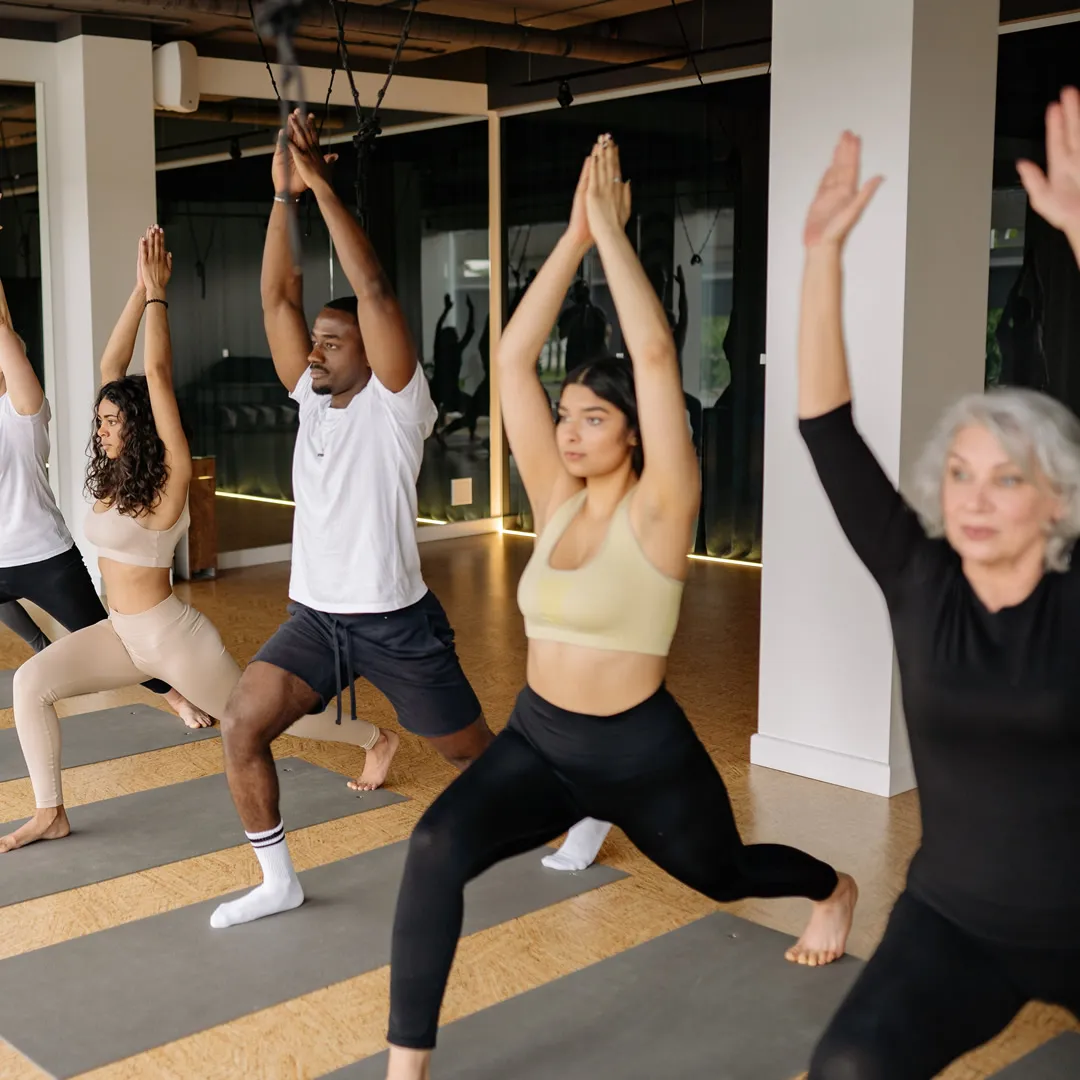
In today’s health-conscious world, yoga teachers face an increasingly competitive market. So, how do you set yourself apart and attract yoga clients? In this article, we will explore strategies to help you find your ideal yoga client and ways to maintain a loyal client base.
Understanding your ideal client is the key to successful marketing. As a yoga instructor, you..
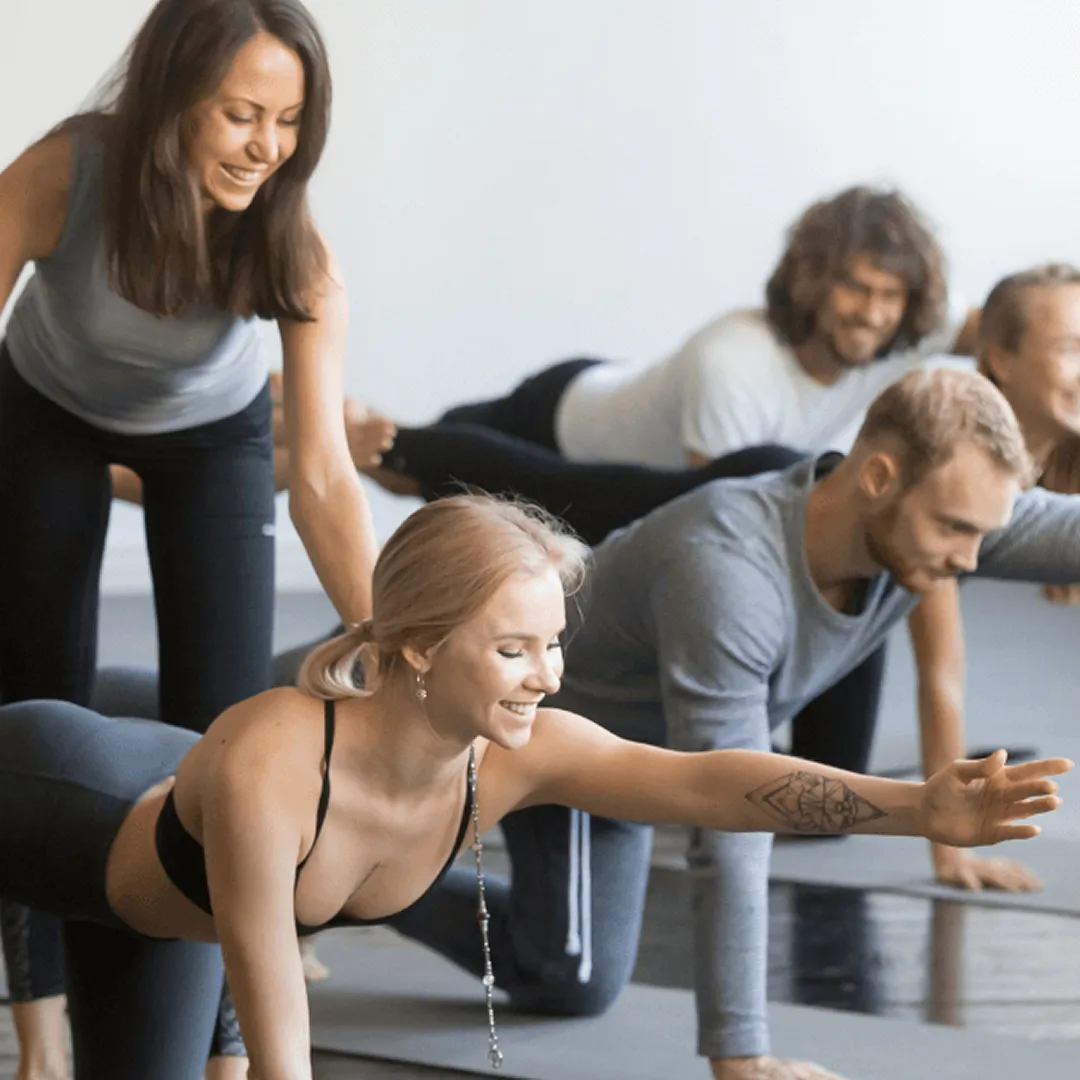
Wondering what makes a good yoga teacher and how you can become one? Well, in this article we will cover this topic in greater depth, breaking down key traits that can make you stand out among employers and class attendees. If you’ve already done your research on how to become a yoga instructor, you’ll know that this job is much more than standing...
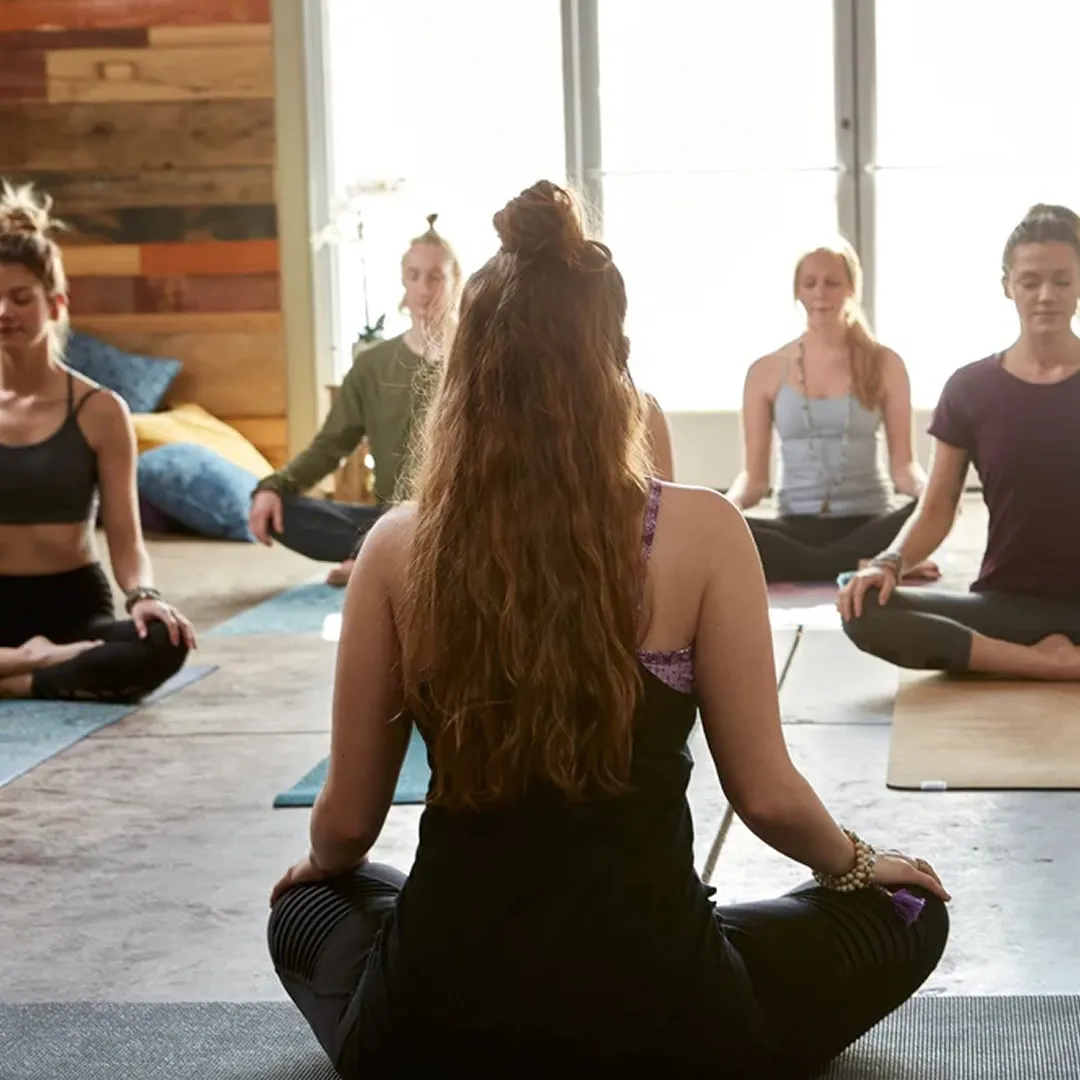
Public speaking can be one of the most terrifying aspects of teaching yoga, but don’t fret! We’re here to provide you with some help getting in front of people and rocking a class! Speaking in public is a skill that can be learned, just like any other skill. Even if you are have an introverted personality, public speaking is a learnable skill...
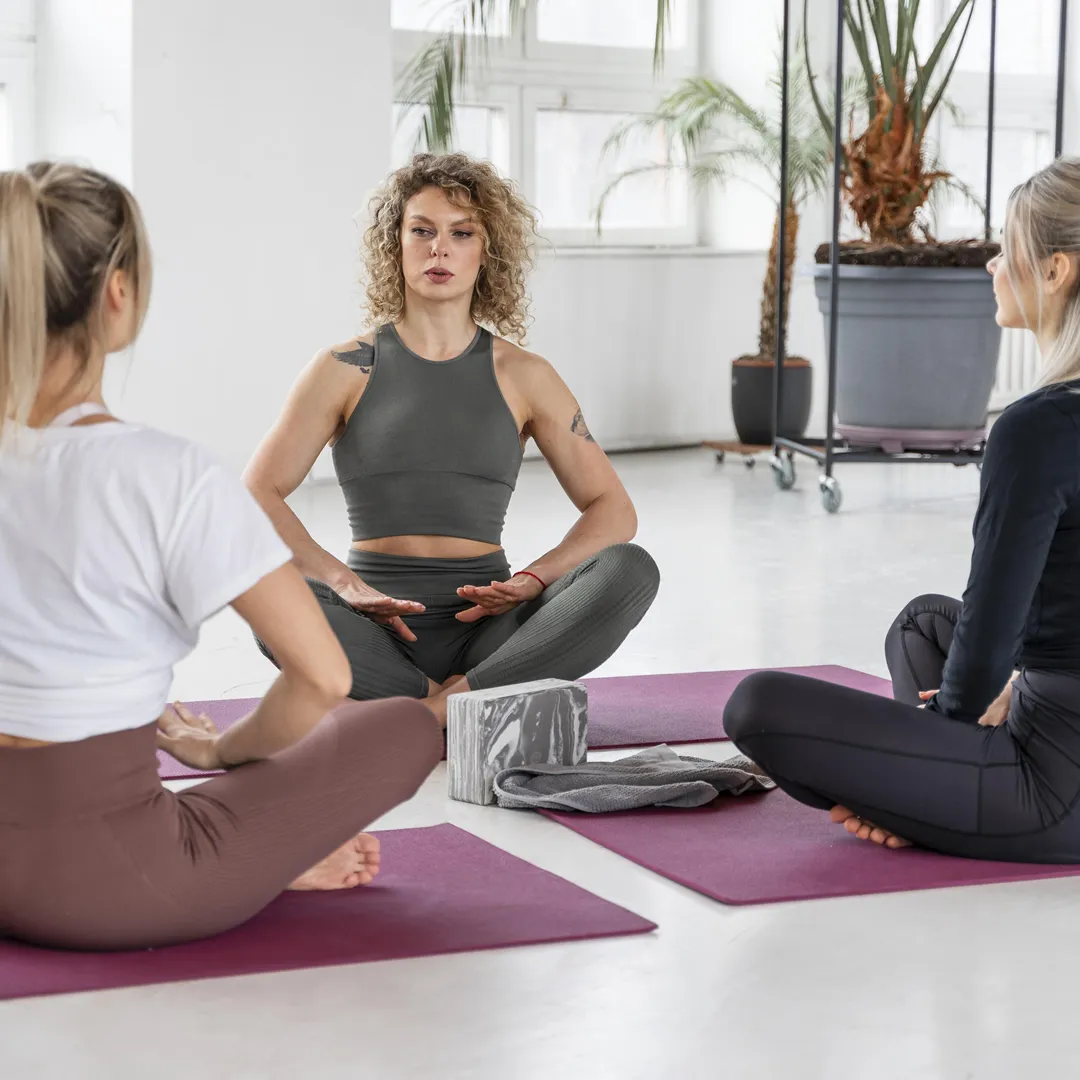
So, you’re thinking about turning your passion for yoga into a fulfilling career? Well, first off, that’s fantastic! It’s not every day that someone decides to pursue their passion and make a difference in people’s lives. But before we get too far ahead, let’s make sure we’re on the same page.
When most people hear the term ‘yoga,’ they often associate it with...
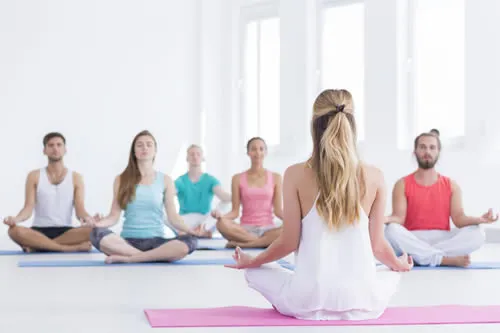
5 Tips For New Yoga Teachers
As a new yoga teacher, it can feel overwhelming as you begin to teach your own classes. You could be experiencing a variety of emotions across the spectrum as you enter into this new chapter of your life. Teaching yoga, and teaching in general, could be brand new for you. New things tend to push us outside of our comfort zone and with that could come a level of discomfort, learning and growth. What follows though could be a fulfilling career sharing a practice you love. Here are some tips as you navigate through the beginning stages of being a yoga teacher.
1. Keep Tending To Your Own Practice
This is the first tip because it is so important. Your learning does not stop after teacher training. As humans we are meant to continue to evolve, which means that our level of growth and therefore our teachings should evolve and deepen as we do the same. Yoga is meant to guide us through the layers of our being to realize the true self. If we do not continue through the study, practice, and application of yoga (all 8 limbs) our teachings will become monotonous. Furthermore, our well of inspiration will most likely dry up. Tending to your own practice both with teachers, coaches, mentors, peers, and on your own will keep the learning, growing, and giving going.
2. Take The Sub Opportunities
Do not shy away from sub opportunities. Most new teachers start by subbing classes. This is helpful for you as the teacher to practice what you’ve learned and to connect with the studio’s clientele. It is also beneficial for the owners/managers of the studio to see if you are a good fit for the community as a teacher, and it is an opportunity for the clients of the studio to begin to get to know you (you will need people to attend your class once you are a regular teacher on the schedule). While subbing a class can bring up a plethora of emotions, it generally cannot be avoided. It is helpful and actually necessary for all parties involved.
3. Continue To Practice Your Teaching Skills
Just because you have finished your teacher training does not mean that you should stop teaching to your family, friends, co-workers and anyone who you have the ability to teach! Teaching is a skill like any other, and when you stop practising the skill can become forgotten. I recommend trying to find sub opportunities right away once you finish your training if you are intending to teach. For a variety of reasons, that may not happen so you must continue to practice. Even if you are actively subbing classes, it may not be frequent or consistent so continuing to practice your teaching skills is a must.
4. Remind Yourself That It’s Okay To Make Mistakes
You’re not perfect and that is OKAY. You might forget part of your sequence, you might mess up the rights and lefts, your music may stop in the middle of class, or you may not say a cue as clearly as you wished. Remind yourself that it is all part of the process. Every single person makes mistakes in all fields. I can assure you that most yoga teachers have done all of the above, even with experience. Mistakes are how we learn and in fact, how we get better.
5. Accept That You Are A Beginner
It could be easy to wish that you were years down the line having gotten over the nerves of being a new teacher with a flourishing clientele and career. But wishing you were somewhere else other than where you are now is a waste of time. You can envision it and accept that you are a beginner. Why not choose to be grounded in where you are right now? Stepping into this and owning this will help you teach from an authentic place at any point in your teaching career. You might as well start now.
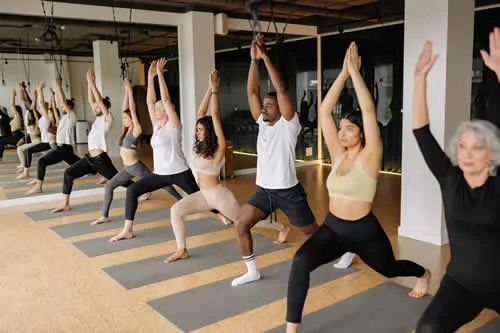
How To Get Yoga Clients
In today’s health-conscious world, yoga teachers face an increasingly competitive market. So, how do you set yourself apart and attract yoga clients? In this article, we will explore strategies to help you find your ideal yoga client and ways to maintain a loyal client base.
Understanding Your Ideal Client
Understanding your ideal client is the key to successful marketing. As a yoga instructor, you must not only understand your clients’ needs and wants but also their lifestyle, habits, and preferences. This will help you tailor your marketing strategies and yoga offerings to attract and retain the right clients.
Recognizing The Need For Yoga In Modern Life
The first step towards understanding your ideal client is recognizing the need for yoga in today’s fast-paced, high-stress society. Yoga offers a host of physical and mental health benefits, ranging from improved flexibility and strength to reduced stress and anxiety levels. It encourages mindfulness, providing a respite from the relentless pace of modern life.
As a yoga instructor, recognizing these needs allows you to identify potential clients who might benefit from your services. The stressed-out corporate executive, the anxious college student, the stay-at-home parent seeking self-care — all these could be potential clients for your yoga business.
Defining Your Ideal Client
Your ideal client is the person most likely to benefit from and be interested in your specific yoga offerings. To define your ideal client, consider the following factors:
Demographics: Age, gender, location, occupation, and income can all influence a person’s interest in yoga. For instance, you might decide to target busy professionals looking for stress relief, young parents seeking pre- or postnatal fitness, or seniors looking for gentle, low-impact exercise.
Psychographics: This includes lifestyle, values, hobbies, and attitudes. A person who values health and wellness, enjoys physical activity, or seeks spiritual growth might be more likely to pursue yoga.
Yoga Preferences: Consider whether your ideal client is a beginner or an advanced yogi. Do they prefer a particular type of yoga (such as Hatha, Ashtanga, or Yin)? Are they more interested in in-person classes or online sessions?
Pain Points and Goals: What are your ideal clients’ main struggles? Are they looking for stress relief, physical fitness, mental clarity, or spiritual growth? Aligning your yoga services with these pain points and goals will make your offerings more attractive to your ideal client.
By understanding your ideal client, you can create targeted marketing messages that speak directly to their needs, preferences, and challenges. You can tailor your yoga classes to address their goals and provide the value they’re seeking, making it more likely that they will choose you as their yoga instructor.
Marketing Strategies For Yoga Teachers
As a yoga instructor, marketing your services effectively is crucial in attracting and retaining clients. It’s about reaching potential clients, connecting with them, and communicating how your offerings can meet their needs. Let’s dive deeper into some of the marketing strategies that can help you grow your yoga business.
Instagram, being a highly visual platform, is perfect for showcasing your yoga skills, routines, and behind-the-scenes glimpses of your classes. Share high-quality images and short videos of different poses or sequences, offer quick tips and hacks, and provide insights into your yoga philosophy. The use of relevant hashtags can help increase visibility. Instagram Stories and IGTV are also great for sharing longer form content or interactive Q&A sessions. Building a strong Instagram presence can make you more relatable and accessible to your followers, helping convert them into clients.
Facebook is another excellent tool for reaching potential clients. Start a dedicated page for your yoga classes where you can post updates, inspirational content, and class schedules. Facebook Live can be utilized to host live yoga sessions, meditations, or workshops, allowing you to engage with your audience in real-time. Facebook Groups can also be beneficial in fostering a community, providing a space for your students to interact, share their experiences, and support each other.
Starting A Yoga Blog
Writing a blog can demonstrate your knowledge, passion, and expertise in yoga. You can write about various topics – yoga poses and their benefits, how yoga improves mental health, tips for beginners, advice on yoga equipment, etc. Offering valuable and interesting content can attract readers and potential clients. You can promote your blog posts through your social media channels to reach a wider audience.
Leveraging SEO
Search Engine Optimization (SEO) is the practice of increasing the quantity and quality of traffic to your website or blog through organic search engine results. Using SEO techniques such as keyword optimization, quality content creation, and link building can improve your site’s visibility on search engines like Google. For example, if you’re a yoga instructor in Austin, using keywords like “Austin yoga classes” or “yoga instructor in Austin” in your website content can help local clients find you easily.
Email Marketing
Building an email list and sending regular newsletters is another effective way to stay in touch with your potential and current clients. You can share updates, upcoming events, special offers, and valuable content related to yoga and wellness.
Offering Workshops And Special Classes
Workshops or special classes focusing on a particular theme (like Yoga for Stress Relief or Prenatal Yoga) can attract new clients. Promoting these events on your website, social media channels, and local community boards can help increase visibility.
Each of these marketing strategies can help you reach your target audience, communicate your value, and grow your client base. Remember, consistency is key in marketing, and it’s crucial to keep refining your strategies based on what works best for your unique yoga business.
Building Connections
Building connections, both online and offline, is a vital aspect of growing your yoga business. It’s about establishing relationships that can lead to opportunities, partnerships, referrals, and a sense of community among your clients. Let’s explore further how you can build meaningful connections in your yoga journey.
Networking With Other Yoga Teachers
Networking with fellow yoga teachers can open doors to countless opportunities. They can share insights from their experiences, offer guidance, and even refer students to you when their classes are full or when they encounter someone who might benefit more from your specific style or focus. Attending yoga workshops, training, and conferences can provide you with platforms to connect with other yoga teachers.
Moreover, collaborative projects such as co-hosted events, retreats, or workshops can allow you to tap into each other’s client base and reach a wider audience. These collaborations can offer added value to your clients and create a more diverse, engaging yoga experience.
Collaborating With Local Businesses
Partnering with local businesses related to health and wellness can be a win-win strategy. For instance, you could collaborate with a health food store, a wellness center, a spa, or even a bookstore to offer joint promotions or events. This could mean hosting a yoga class at a health food store or offering a discount at a spa to your yoga clients. Such collaborations can introduce your yoga services to their customers, and vice versa.
Engaging With Your Community
Participating in community events or volunteering can also help you build connections. For instance, you could offer a free yoga class at a local health fair, a charity event, or a community festival. This not only gives you exposure but also demonstrates your commitment to giving back to the community.
Creating A Strong Online Presence
Building connections in the digital world is equally important. Make sure to engage with your followers on social media—reply to their comments, answer their queries, and appreciate their feedback. You could also create a dedicated online group or forum for your yoga clients, where they can interact, share their progress, and support each other.
Building Strong Relationships With Your Clients
Finally, and most importantly, foster strong relationships with your clients. Show genuine interest in their yoga journey, celebrate their milestones, provide personalized advice, and offer a listening ear when needed. Make sure they feel valued and part of a yoga community.
Remember, building connections isn’t about promoting your services constantly; it’s about creating mutually beneficial relationships based on trust, respect, and shared interests. These connections can significantly contribute to the growth and success of your yoga business.
Offering Value To Clients
Offering value to clients goes beyond just teaching yoga classes. It involves creating a comprehensive yoga experience that meets their needs, exceeds their expectations, and brings meaningful change to their lives. Here’s how you can offer value to your yoga clients:
Providing Exceptional Yoga Instruction
First and foremost, offer high-quality yoga instruction. Stay updated with the latest techniques, philosophies, and trends in yoga, continuously improving and diversifying your teaching methods. Pay attention to each student’s needs and capabilities, modifying poses as necessary and ensuring their safety. Demonstrate patience, encouragement, and empathy, creating a welcoming and supportive environment for all students.
Understanding And Meeting Clients’ Needs
As discussed earlier, understanding your clients is crucial. Once you identify their needs, pain points, and goals, align your yoga offerings accordingly. This might involve offering different styles or levels of yoga, providing special classes focused on specific issues like stress relief or back pain, or integrating meditation and breathwork to enhance mental well-being.
Creating A Welcoming Community
Create a sense of community among your clients. This could be through in-class interactions, encouraging students to connect with each other, or creating dedicated online platforms for discussion and support. A sense of community can make clients feel valued, connected, and more committed to their yoga journey.
Offering Personalized Attention
Offer personalized attention and guidance to each client. Acknowledge their progress, provide individual feedback, and offer personalized modifications or advancements in poses. Personalized attention can make clients feel cared for, boosting their motivation and commitment to yoga.
Sharing Valuable Content
Share valuable content related to yoga and wellness—through social media, blogs, newsletters, or in-class talks. This could be yoga tips, wellness advice, or insights into yoga philosophy. Valuable content can enhance clients’ knowledge, add depth to their yoga practice, and increase their engagement with your yoga brand.
Providing Excellent Customer Service
Offer excellent customer service. Be approachable, responsive, and helpful in all your interactions with clients. Make it easy for clients to book classes, address their concerns promptly, and always be open to their feedback. Excellent customer service can improve client satisfaction and loyalty.
By offering value in these ways, you not only attract and retain clients but also enhance their yoga journey, contributing to their physical, mental, and emotional well-being. This will not only build your reputation as a yoga instructor but also foster a loyal and committed client base.
Maintaining Client Relationships
Maintaining strong relationships with your yoga clients is crucial for client retention and business growth. It requires consistent effort, genuine interest, and excellent service. Here are some strategies to nurture and maintain client relationships in your yoga business:
Consistent Communication
Consistent communication is key to maintaining relationships with your clients. Regular updates about class schedules, new offerings, special events, or any changes in the business keep your clients informed and engaged. Use various communication channels like email, social media, text messages, or your website to reach your clients effectively.
Client Recognition
Recognize your clients’ milestones and achievements, no matter how small they may seem. Celebrating a client’s progress in their yoga journey shows your appreciation and acknowledgment of their effort. It can be as simple as a personal compliment during or after class or a public shout-out on your social media platforms.
Listening To Feedback
Actively seek and listen to your clients’ feedback. It could be about their class experience, their progress, the facilities, or anything else they want to share. Listening to feedback shows your clients that their opinions are valued and considered. Use this feedback constructively to improve your services.
Providing Personalized Experience
As mentioned before, personalized attention can go a long way in strengthening client relationships. Understand your clients’ unique needs and preferences, and tailor your guidance accordingly. A personal check-in to see how they are doing or a personalized email sharing a relevant yoga resource can show your clients that you genuinely care for their well-being.
Building Community
Foster a sense of community among your yoga clients. Encourage interactions and friendships among your clients, host social events, or create online forums for discussion and support. When clients feel part of a community, they are likely to stay committed longer.
Surprising and Delighting Clients
Occasional surprises or gestures can add delight to your clients’ experience. It could be a free class on their birthday, a small gift to celebrate their yoga milestones, or a simple handwritten thank-you note expressing your appreciation.
Remember, maintaining client relationships is not a one-time task, but a long-term commitment. When your clients feel valued, heard, and cared for, they are more likely to stay loyal to your yoga business, and even refer their friends and family, helping your business to grow.
Conclusion
Getting yoga clients involves understanding who your ideal clients are, reaching out to them through effective marketing and networking, offering unique services, and maintaining strong relationships with your existing clients. Implementing these strategies can help you build a thriving yoga practice.
FAQs
What is the best way to market my yoga classes?
Utilizing a mix of social media, blogging, SEO, and in-person networking can be an effective approach.
How can I differentiate myself from other yoga teachers?
Offering unique classes, providing value beyond the yoga mat, and fostering a strong community can set you apart.
How can I use social media to attract yoga clients?
Platforms like Instagram and Facebook can be used to showcase your skills, share your knowledge, and build a community.
Why is understanding my ideal client important?
By understanding your ideal client, you can tailor your services to meet their specific needs and attract clients who are a good fit for your offerings.
How can I retain my yoga clients?
Offering exceptional value, encouraging feedback, and fostering a strong community can help maintain client loyalty.
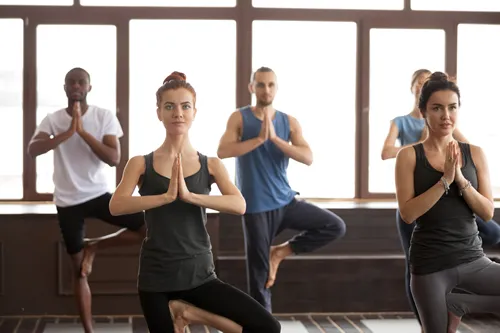
Who Are Savvy Yoga Teacher??
The Yoga Teaching Industry is growing at a phenomenal rate and sometimes it can be hard to keep up and navigate the industry when it comes to the latest requirements, news, software and idea’s - generally speaking a way to move your yoga business forward.
We launched www.savvyyogateacher.com as an online resource for those in the Yoga industry where they can easily access all of their essential requirements on one website, from Creating An Online Yoga Teaching Website, Getting Insurance, Yoga Teacher - Coaching Apps to Footwear & Clothing, Training Equipment and much more.
Our full list of resources are on our home page and can also be accessed by clicking on the (Take Me To - button) on the Home Page header.
Whether Your An Established Yoga Teacher Or New Start Business Trying To Navigate Starting Up A New Venture – We’ve Listed Some Fantastic Resources To Help You Start Building Your New Empire Or To Grow Your Existing One.
We Hope You Find Our Website Useful And Wish You All The Best In Building Your Yoga Empire.
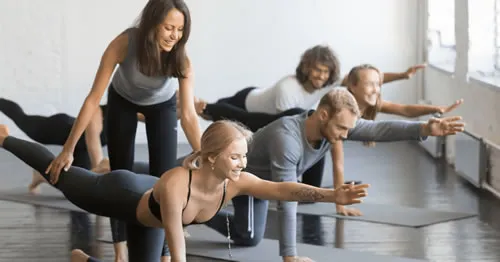
What Makes A Good Yoga Teacher?
Wondering what makes a good yoga teacher and how you can become one? Well, in this article we will cover this topic in greater depth, breaking down key traits that can make you stand out among employers and class attendees.
What Makes A Good Yoga Instructor? 13 Important Skills
If you’ve already done your research on how to become a yoga instructor, you’ll know that this job is much more than standing in a studio and reeling off a list of different yoga poses.
There are tons of different roles and responsibilities of a yoga teacher, from the duties you’d expect to do like demonstrating poses and preparing for classes, to the less glamorous jobs like cleaning the studio.
If you want to know how to be a good yoga teacher, the first thing you’ll need to do is accept all of the roles and responsibilities that come with the job. They’re not all fun, but if you’re really passionate about this career choice, we can guarantee that all of the hard work will be worth it. Seeing as you’re searching for advice on what makes a good yoga teacher, it’s clear that you go beyond the basic day to day tasks of the job.
Below you’ll find all of the traits, skills, and characteristics that make up a good yoga teacher.
1 - Good Communication Skills
Communicating with clients is a key trait of a good yoga teacher. There are a number of reasons why good communication skills are essential if you want to succeed in your role as a yoga teacher. Firstly, you’ll need to be able to clearly communicate with your students during your classes so that they can understand your instructions and take part in the class safely. If your students don’t quite grasp what you’re trying to tell them, they’ll get frustrated and the chances of them coming back to your studio will be pretty slim. But it’s not just about being able to instruct your clients during a class, your communication skills should extend beyond your teaching. Being able to communicate well is the perfect complement to a good yoga marketing strategy. Good communication skills will really help you to sell your services to new students, and keep those students practicing with you.
Don’t forget that communication isn't just about the way that you speak to people - listening to your students is just as important! Listening to your students really helps you to get to know them, the style of teaching they like, and their goals. This will help you to be the best possible yoga teacher to that student, allowing them to enjoy your classes and retaining their custom!
2 - Be Patient
Patience is a quality that any good teacher should possess. Fortunately, as a yoga teacher, patience is something that comes quite naturally to you. Slowing down and achieving patience is one of the most rewarding things about practising yoga. As a yogi yourself, you should be very much familiar with how to practice patience and the benefits of doing so. But we’re not here to talk about the practice of yoga itself, we’re here to explain what makes a good yoga teacher, and why the ability to exercise patience is so important. Within every class you teach, you’ll find students of all different levels. Even in your advanced classes, you’ll have students who struggle to keep up. As with a lot of things in life, there is no one size fits all solution to teaching and practicing yoga, and you can’t expect everybody to pick things up first time.
Be prepared to be faced with the same problems over and over again, make a lot of the same corrections, and answer a lot of the same questions from time to time. This is just part and parcel of the role of a yoga instructor. If you want to be successful in this role, you’ll need to learn to be patient with your students, continuing to persevere even if you get tempted to give up!
3 - What makes a good yoga instructor? You’ve got to be approachable!
If you want to be successful both in the studio and in a business sense, being approachable is really important. Students, potential students, and other yoga professionals all need to feel comfortable approaching you, talking to you, and generally engaging with you. The number one barrier that gets in the way of people taking up a new hobby, especially an exercise-based one, is that they feel intimidated by the thought of taking that first step into the studio, gym, health club - you get the idea! By presenting yourself as somebody who is friendly and easy to talk to, you’ll make new clients feel much more at ease when first coming to your class.
And once they’re your students, being approachable will allow you to create the kind of relationships with your students that will keep them coming back to your classes. The more your students feel like they can come to you, speak honestly, and ask questions, the greater value they will place on you as a teacher, creating loyalty and high levels of retention.
4 - Be Flexible
As a yoga teacher, you’re definitely familiar with the word flexibility, but in this instance, we aren’t talking about how well you can hold one of our favourite yoga poses for two. We’re talking about your ability to be flexible as a professional, your ability to think on your feet and solve any problems that might come your way. This kind of flexibility is essential for a successful career in the health and fitness industry in general, but especially for yoga professionals. Things can change pretty quickly, you could show up to a 1-1 class and find your client has injured themself in some kind of way - throwing your entire plan out of the window. Or, the student could cancel, leaving you with an hour of wasted time that should be spent working. If you don’t have the ability to think up a new class to teach that student, or quickly find a productive way to fill that time, you’ll struggle to be successful in this job. In an ideal world, 1-1 students would never cancel and every class you teach would be full consistently. But as you probably already know, things don’t always work out this way!
The ability to chop and change your schedule so that you don’t miss out moneywise will allow you to keep earning and even grow your business. Being flexible in the sense that you’re able to adapt classes and swap out poses that don’t work for particular students is also an essential skill of any good yoga instructor, which is why this next point is really important.
5 - They’re Passionate
Making a career out of something that you’re passionate about is a brilliant move as it allows you to do what you love every day. Passion is the number one factor that will give you the drive to make your business a success, it’s what gets you through those days where you feel completely overwhelmed. A career as a yoga teacher can be really rewarding, but if you don’t have a passion for the practice, you’ll soon get tired of teaching back-to-back classes and spending hours working behind the scenes to keep your business running. Being passionate doesn’t just help you to keep your business running and enjoy your job, it has benefits for your students, too. It makes sense really, - if you want your students to find their love for yoga, then it really helps that you, as their teacher, lead by example. Your passion and ability to convey your love and respect for the practice of yoga across to your students will inspire your students to really enjoy the practice for themselves, adding to their overall experience.
And don't forget, the better their experience, the more they will view you as a good yoga teacher! This keeps them coming back to your business, so it comes full circle.
6 - A Good Yoga Teacher Should Be Engaging
This one kind of goes hand in hand with those communication skills that we talked about earlier. But this point is pretty important, so we thought it deserved its own space on our list. Being engaging means that you’re able to communicate in a way that grabs the interest and attention of others.
The more engaging you are, the more people will want to hear about what you have to say.
The ability to captivate attention and effectively engage students with your class is essential to making sure that everybody is enjoying your class and benefiting from your teaching - both of which are essential if you want your yoga business to be a success. In order to be engaging, you’ll need to know what you’re talking about - which is exactly where knowledge comes into what makes a good yoga instructor.
7 - You Need To Be Knowledgeable
It goes without saying that if you want to be a good yoga teacher, you’ll need to have some kind of knowledge on the subject. If you’re here because you’re interested in becoming a yoga teacher, it’s safe to assume that you’re a yoga lover yourself. Having a passion for yoga and enjoying the practice will help to make your business a success, but when it comes to how to be a good yoga teacher, in terms of holding classes and running a yoga business, knowledge is just as important. As confident as you might be in your self-taught knowledge of the history of pilates or yoga, you’ll need at least a Level 3 qualification if you want to make the cut as a yoga teacher.
Knowing what kind of class and breathing techniques you enjoy is great, but every student has different preferences and requirements. For that reason, yoga teachers need to understand the basics of anatomy and physiology, the fundamentals of yoga, and how to teach a class - all of which are taught on a Level 3 yoga instructor course. A Level 3 yoga qualification will provide you with all of the knowledge about planning to teach yoga classes for a range of students of varying ages, abilities, and levels of fitness. Holding this level of qualification will allow you to run a reputable business and provide the best possible service to your students. That’s because any old yoga course that you can find on the likes of Reed won’t give you the right knowledge to trade as a yoga instructor.
In order to get the level of knowledge required to be a good yoga instructor, the qualification that you complete will need to be one that is regulated by a governing body, such as Ofqual. Plus, holding a regulated qualification is an essential requirement of yoga insurance providers - something that you should definitely look into!
8 - They’re Professional
If you want to be a respected yoga instructor, then you’ll need to look and act in a professional manner. No, we aren’t suggesting you wear a pantsuit in the studio, but just because your yoga class isn’t the typical professional environment, doesn’t mean you can’t make the effort to ensure that you’re well-presented and professional.
If you’re working at a studio, you might have a uniform. But if you’re a freelancer, you’ll have the freedom to wear whatever you like - to an extent! Obviously, you’ll have a much more relaxed dress code given that you have an active job, but you still need to have high hygiene standards and keep your appearance smart and tidy. This applies to the way that you act and the way that you carry yourself, too. Again, when you first started to write your own yoga business plan, you were probably pretty excited about the idea of being your own boss. But at some point, you need to recognise that when your old boss was constantly bugging you to get off your phone or to stop chatting with your colleagues, they were doing so for good reason.
Any good yoga teacher should carry themselves in a professional manner, regardless of whether they’re the owner of their studio or working for somebody else. That means, putting your phone down and being present with your students. Whether that’s during your class, or even during a general chit chat at the reception desk. Having your phone out in front of customers is a big no-no.
There’s nothing more annoying than trying to talk to somebody whilst they’re also scrolling through their Facebook feed. This is completely unprofessional, and honestly, it’s just bad manners in general. We know what you’re thinking - you use your phone for work, right? Whilst that’s true, anybody who wants to be a good yoga teacher should get out of the habit of using this excuse. If what you’re doing on your phone is genuinely important, politely explain to the student that you’re busy instead of coming across as unprofessional.
9 - Be Punctual
This one is true of any job, but it’s especially important as a yoga teacher. As the person holding a class or organising a yoga retreat, you need to be the first person there and the last to leave. Being punctual will allow you to stick to your schedule for the whole day. What might only be 5 minutes in the morning can have a knock-on for every other class for the rest of the day, and it can cause a huge inconvenience to your students - which is the last thing you want to do! Any good yoga teacher should always be ready at least 5 minutes before the class is expected to start. You want your students to be confident that you’re reliable, so being punctual is absolutely essential.
Some of the best yoga studios take this time to set up yoga blocks, mats, and any other yoga kit or equipment that might be needed during the class which really helps with student satisfaction.
10 - Have Professional Relationships With Students
Being approachable and engaging are both brilliant traits to have as a yoga teacher. These traits allow you to create good relationships with your clients which can help with customer satisfaction and client retention. But, you still need to keep things professional. At the end of the day, being a yoga teacher is your job. Whether you’re a freelancer or you run your own studio, this is your business! So as great as it is that you can be friendly with your students, any good yoga teacher needs to know how to keep that relationship professional.
So how can you be friendly, but not too friendly? It’s all about balance! It’s fine to chat with your students before and after classes, but the last thing you want is for your class to end up being more a catch-up. A good yoga teacher should recognise that the purpose of having good relationships with students is to keep them happy, not to find yourself some new friends, or even a partner.Any relationship that you do have with students should be completely professional and always with the purpose of running your business in the best way possible.The moment that relationship gets in the way of you teaching yoga, you need to take a step back and figure out how to out business back at the top of your list of priorities.
11 - They’re Authentic
Staying true to the kind of person you are and the kind of yoga teacher you are will allow you to succeed within this role. Everybody has their own unique approach to teaching, and different kinds of students will like or dislike that style. Whether you’re a really outgoing person or you choose to be more nurturing and gentle in your teaching style, the most important thing is to be authentic. The worst thing to do is to try to tone down your personality in an attempt to please everybody. If you try to be something you’re not, your students will see right through the act! So stay true to yourself - that’s what your students like about you. By embracing who you are, you are showing positivity and self-confidence, both of which are brilliant qualities for a yoga instructor to possess.
12 - How To Be A Better Yoga Teacher? Get Organised
Again, this one doesn’t only apply to what makes a good yoga instructor, but it’s important so we couldn’t leave it out! If you want to know how to be a better yoga teacher, one word of advice is to always plan your classes in advance!
Taking the time to get prepared for your classes, creating a plan, and really thinking about what you want yourself and your students to achieve will make your class run a lot more smoothly and allow you to provide better service overall. The need to be organised is especially important for a yoga teacher as a lot of people in this industry are working as freelancers or even running their own business. Once you become a yoga teacher, you’ll be responsible for organising your own working schedule, scheduling classes, and managing your enquiries. There’s also a lot of work that goes into running your own business, from registering your business, to filing your tax return, paying bills - unfortunately, the list goes on.
No matter how much you love working as a yoga professional, we all only have 24 hours in a day, and we all need to take a break every now and then!. Getting organised not only makes sure you get stuff done, but it also stops you from getting overwhelmed once work has piled up.
13 - Attention To Detail
One final trait that we couldn’t miss from this list, is that if you want to be a good yoga teacher, you’ll need to make the effort to pay attention to all of the little details. Finding the right ambience for the studio by paying attention to the details like your playlist, the temperature, and lighting, can all show your students that you’re making the effort to go above and beyond.
It’s perfectly fine if not everything about your class is perfect to start off with, as long as you continue to look for ways that you could provide a better service. It really helps to listen to any feedback from your students, and take that on board, making any small tweaks and changes. The little things can often make the biggest difference, so paying attention to the details can really pay off.
Small things like setting up the yoga mats and getting everybody's equipment ready before the class begins, rather than having your students sort that themselves, can really improve the quality of service that you’re offering.
What Makes A Great Yoga Teacher?
By now you should have a pretty good idea of what makes a good yoga teacher. Hopefully, the list above has given you an idea of the kind of skills to work in order to know how to become an even better yoga teacher.
If you’re still with us, we assume it’s because you want to know what makes a great yoga teacher.
How To Be A Better Yoga Teacher: Professional Development!
When we answered ‘what makes a good yoga teacher?’, we explained that having a good knowledge and understanding of Yoga is essential.
1 - Qualifications & CPDs
One thing to know is that no matter how many classes you’ve attended yourself, you need to hold a level 3 qualification as a bare minimum. A level 3 course will provide you with all of the necessary knowledge and understanding in order to teach yoga classes for yourself.
But seeing as you want to know what makes a great yoga teacher, do you think that bare minimum is really enough? The best way to market yourself as the best yoga business among your competitors is to have the qualifications to back up your claims! That means, completing CPD (continuing professional development) courses, getting a Level 4 yoga qualification, or even branching out into a different specialisation. This could be something small like studying a fitness business CPD to learn the best way to run your business, including key skills like sales, marketing, and the best way to build a good rapport with clients.
If you really want to commit to being a great yoga teacher, you could even branch out into a similar profession in the health and fitness industry. You could study a Level 4 advanced nutrition course and learn about meal planning, and get the necessary qualifications to give your students nutritional support too. Becoming a nutrition coach alongside a yoga teacher can add to the value that you offer your students and make your business unique.
By understanding how exercise and nutrition can go hand in hand, you can improve the quality of your service and the benefits to your students, which makes you a great yoga teacher!
2 - Attend Seminars
Outside of qualifications, you can demonstrate your commitment to your career and add to your professional development by attending seminars. Seminars (and workshops) are hosted by specialised professionals who give talks about the profession, and share their advice on how to improve your skills as a yoga instructor. They’re typically very affordable, and the benefits of attending are definitely worth the price you pay.
These kinds of events are a great way to expand your knowledge, keep upto date with the latest trends, and network with other yoga teachers - all of which will benefit your career! You can chat with other yoga professionals, ask the experts questions, and get the word out there about your own business.
3 - Webinars
If you want to know how to become a better yoga teacher, we’d definitely suggest researching what relevant online webinars are coming up. Whether you live a little out of the way and you don’t have the time to travel to physically attend a seminar, or you don’t have the spare cash to spend on travelling to and from seminars, webinars are a brilliant alternative. Webinars remove all the barriers associated with location, meaning you can get to hear from your favourite yoga professional even if they’re based on the other side of the world.
You won’t have the same benefits that come with chatting to the host face to face or networking with the other attendees, but you’ll still learn a lot about the profession. There will still be some opportunity to ask the host questions and some platforms do have a live chat feature, which is the next best thing to networking face to face. One of our favourite things about webinars is that live talks on platforms like Facebook or Instagram live are usually posted so that you can refer back to them, or catch up later on. Another bonus is that webinars are often available completely free of charge, so you really don’t have anything to lose!
In our opinion, getting involved with webinars and then attending the odd seminar when you can is a brilliant compromise that will really help with your professional development.
4 - Attend Other Yoga Classes
There’s no better way to learn about the latest yoga trends and different kinds of classes than to experience one for yourself! Attending classes at other studios with different yoga instructors is a brilliant way to learn more about your competition and really see how they run their classes. Not only does this allow you to stay up to date with new trends and fads, having that first hand experience at a competing business can help you to identify anything that they are doing that you think you should be doing. Or, you could notice something they aren’t doing, which would open up an opportunity for you to use that gap in the market to build your own business.
Attending other yoga classes is a key step in the research that you should carry out when you’re first marketing a yoga business, but it shouldn’t stop once that marketing plan is in place. Continuing to do this kind of research will allow your business to stay ahead of the competition and keep your students interested!
5 - Start An Online Yoga Teaching Business
Finally, a brilliant way to become a great yoga teacher and earn a generous yoga teacher salary is to take your business online!
Teaching yoga online means that location is no longer a barrier between your business and potential customers, which massively increases the number of students available to you. And because online yoga classes aren’t restricted by the size of a studio, and 1-1 sessions are typically a lot less time consuming if you pre record your content, you can take on tons more students.
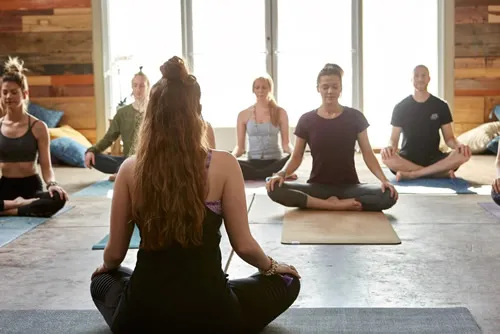
5 Tips To Master Public Speaking In Your Yoga Classes
Public speaking can be one of the most terrifying aspects of teaching yoga, but don’t fret! We’re here to provide you with some help getting in front of people and rocking a class! Speaking in public is a skill that can be learned, just like any other skill.
Even if you are have an introverted personality, public speaking is a learnable skill.
1. Preparation
Proper preparation prevents a poor performance as the old saying goes! Practice and preparation will help you overcome anxieties leading up to your class by helping you to build confidence in yourself. This is a great way to familiarize yourself so that you have a routine you can stick with. Many yoga teachers find structure and preparation integral to a successful class!
2. Pace Your Breath – Pranayama
Teaching a class can be a marathon! But as a yogi, we all have a special appreciation for the power of breathing. And just like the runners that run marathons, pacing your breath is an important component of public speaking – it’s a great opportunity to use the power of pranayama to your benefit in a real life scenario.
3. Start Strong
Another common public speaking tip that can be employed in a yoga class is to start strong. The opening of a class isn’t just important because it helps to set the tone and mood of the class experience, but also because it can hep you as a teacher build momentum into the rest of the class. Starting out on the wrong foot can sometimes flatten out your confidence. Put a lot of thought on your class introduction and it will benefit you greatly for the rest of the class flow.
4. Work With-In Your Comfort Zone
Its good to push yourself and try to step out of your comfort zone as much as possible, but perhaps the class room isn’t the best place to try out new things. Practice, learn and then bring your experience to the class room. After all, that’s what you’re sharing – experience and wisdom as a yoga teacher. If your experience is limited, the lesson may be as well.
5. Repeat Yourself When Appropriate
Depending on how much speaking you do in your class, you may be surprised by how much of your words the class may actually miss. If you have some powerful statements sprinkled into your dialogue, it can be helpful to repeat some of them to emphasize their value.
You should always try to give the audience something new that they learned. Try your best to be the one that can bring something new to them, otherwise your value starts to diminish little by little. Whether it’s a unique little phrase or saying, a new asana, sequence, or even a little piece of relevant history they can take away – bringing an educational component to the class helps to build value in your presentation.
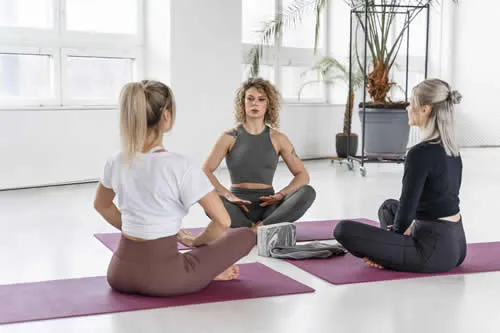
How To Become A Yoga Teacher
So, you’re thinking about turning your passion for yoga into a fulfilling career? Well, first off, that’s fantastic! It’s not every day that someone decides to pursue their passion and make a difference in people’s lives. But before we get too far ahead, let’s make sure we’re on the same page.
Understanding Yoga: More Than Physical Exercise
When most people hear the term ‘yoga,’ they often associate it with the physical postures or ‘asanas’ that make up just one part of the broader practice. While these asanas, with their array of challenging bends and balances, can indeed provide a robust physical workout, yoga is, in fact, a multidimensional practice with profound depths that go far beyond physical exercise.
Derived from the Sanskrit word ‘yuj,’ which means to yoke or bind, yoga is fundamentally about creating unity. It’s about harmonizing the mind with the body, the individual with the universe, the inner self with the outer world. It’s an ancient discipline designed to bring balance and health to the physical, mental, emotional, and spiritual dimensions of our being.
As a physical discipline, yoga enhances strength, flexibility, and balance. It helps improve posture and alignment, which contributes to overall physical well-being. The breathing exercises, known as ‘pranayama,’ increase lung capacity and enhance vitality and energy levels. But the benefits of yoga extend beyond the body.
Mentally, yoga helps cultivate mindfulness, focusing the mind and bringing it into the present moment. Regular practice can increase concentration, decrease stress levels, and even improve memory and cognitive function. This mindful awareness nurtures a more profound sense of connection to the self and the world around us.
Emotionally, yoga can serve as a powerful tool for self-discovery, helping practitioners to confront and address emotional pain and trauma. It promotes emotional balance and stability, helping to regulate mood and manage negative emotional states like anxiety and depression.
Spiritually, yoga provides a pathway to inner peace, fostering self-acceptance and compassion. Many people find that regular practice helps them feel more centered, connected, and spiritually fulfilled, regardless of their religious beliefs or spiritual inclinations.
As a yoga teacher, your role is to guide students along this transformative path. It’s about sharing more than just the mechanics of poses; it’s about imparting the holistic philosophy of yoga, promoting a balanced lifestyle, and helping students connect with their inner selves. It’s not just about teaching, it’s about inspiring and facilitating personal growth.
So, when we talk about understanding yoga, we’re talking about more than just understanding physical exercise. We’re talking about a comprehensive, holistic discipline that promotes overall well-being and profound inner transformation. Isn’t that a wonderful journey to embark upon?
Various Styles Of Yoga
Yoga, in its vast expanse, has taken on many shapes and forms throughout its rich history. Each style offers unique interpretations and focuses, appealing to a wide range of practitioners based on their personal preferences and goals. Here, we’ll delve into a few prominent styles to give you a better idea of their distinctive characteristics.
Hatha Yoga
Hatha Yoga is often considered the foundation for many other styles of yoga. It typically involves a combination of asanas (poses), pranayama (breathing exercises), and meditation to help improve physical strength, flexibility, and mental tranquility. Hatha Yoga is known for its slower pace and focus on basics, making it an excellent choice for beginners.
Vinyasa Yoga
Vinyasa Yoga is characterized by its fluid, movement-intensive practice where postures or asanas are connected through the breath in a dance-like flow. This style can be quite vigorous, offering a more cardiovascular workout compared to its counterparts. Each class can vary widely, as there’s no fixed sequence of poses, making it a fun and dynamic option for those who like diversity in their routine.
Ashtanga Yoga
Ashtanga Yoga is a more rigorous style of yoga based on a specific sequence of postures combined with breath. It is often referred to as a modern-day form of classical Indian yoga. Ashtanga consists of six series of specific postures taught in order, allowing students to progress at their pace. It’s a physically demanding practice and may be more suitable for individuals who appreciate structure and are looking for a challenging workout.
Iyengar Yoga
Developed by B.K.S. Iyengar, this style of yoga is meticulous and precise, focusing heavily on proper alignment in each pose. Props such as blocks, straps, and bolsters are often used to assist in finding correct posture. This attention to detail and the slow pace of the class make Iyengar Yoga a good choice for beginners or those recovering from injuries.
Kundalini Yoga
Kundalini Yoga is a deeply spiritual style that aims to awaken the kundalini energy believed to reside at the base of the spine. It combines dynamic physical postures, breathwork, mantra chanting, meditation, and spiritual teachings. Its practice can be intense but can also lead to profound moments of clarity and awakening.
Restorative Yoga
As the name suggests, Restorative Yoga is all about relaxation and restoration. With the aid of props, practitioners are guided into passive poses that they hold for an extended period, usually several minutes. The aim is to release tension, slow down the pace, and nurture oneself. This style is perfect for anyone seeking stress relief and deep relaxation.
These are just a handful of the many styles of yoga out there. Each has its unique appeal, and the best way to find out which one suits you is to give them a try. Remember, the journey of yoga is about self-discovery and personal growth. As you explore different styles, you might find that your preferences change and evolve. And that’s perfectly okay. It’s all part of your personal yoga journey!
Pathway To Becoming A Yoga Teacher
Turning your passion for yoga into a career as an teacher involves a multi-step process. While it may seem daunting, each step is an integral part of the journey, helping you grow not just as an teacher, but also as an individual. Let’s dive into the pathway.
Personal Mastery And Regular Practice
Your journey starts with personal mastery. But what does that mean? It means developing a profound understanding of yoga and its many facets. This understanding is achieved through regular practice. Your personal practice is your laboratory, your space to experiment, explore, and experience the subtleties of yoga.
Consider it as a journey within a journey. With each asana you perform, with each breath you control, you dive deeper into the ocean of self-understanding. A daily commitment to your yoga mat not only strengthens your body and calms your mind but also builds the foundation upon which your teaching career will stand.
Benefits Of Personal Practice
Your personal practice is beneficial in many ways. It helps you comprehend the intricate details of different asanas—the correct alignment, the impact of breath control, and the influence of each pose on your body and mind. It also allows you to experience firsthand the mental and emotional shifts that come with regular practice.
These insights become invaluable when you start teaching. They allow you to empathize with your students, to guide them through their own journeys with an understanding born not just from textbooks, but also from personal experience. Remember, the best teachers are often those who remain perpetual students.
Completing A Yoga Teacher Training Course
Once you’ve built a strong personal practice, it’s time to step into the role of a student—this time, in a more formal setting. Enrolling in a Yoga Teacher Training Program becomes your next crucial step. These programs, often available in various formats like 200-hours, 300-hours, or 500-hours, are designed to equip you with the skills necessary to teach yoga.
In these programs, you will delve deeper into yoga philosophy, learn detailed anatomy relevant to yoga, study different asanas, pranayama techniques, and meditation practices. You’ll also learn how to design a yoga class, how to assist and adjust students, and how to handle the business aspect of yoga teaching.
Choosing The Right Course
When it comes to choosing a Yoga Teacher Training Course, it’s essential to find the one that resonates with you the most. Factors like the program’s curriculum, the experience and philosophy of the trainers, the duration and schedule of the program, and its cost are all important considerations.
Does the course align with your yoga style and philosophy? Does it offer a good balance between theory and practice? Is it recognized by a reputable yoga organization, such as the Yoga Alliance? These are crucial questions that need to be addressed before you make your decision.
Certification Requirements
Upon completion of your Yoga Teacher Training Program, you will need to pass a certification exam. This exam typically includes both a written and a practical component to test your understanding of yoga theory and your ability to teach a class.
While it may sound intimidating, remember that the exam is simply a step in your journey. It’s an opportunity to consolidate what you’ve learned and demonstrate your readiness to share the joy and wisdom of yoga with others.
Becoming a certified yoga teacher is an investment in your future, a testament to your dedication, and a badge of honor that signifies you are now ready to guide others on their own transformative journeys. And remember, every step on this path, every pose, every breath is a part of your growth - embrace it, and keep moving forward.
Building A Career As A Yoga Teacher
Once you’ve completed your training and received your certification, it’s time to step into your new role as a yoga teacher. This transition can be both exciting and daunting, but remember that every great teacher started where you are now. Here’s what you need to know.
Gain Teaching Experience
Experience is the best teacher, and this is especially true when you’re starting your career as a yoga teacher. Initially, focus on gaining as much teaching experience as you can. This can be in a variety of settings, such as yoga studios, fitness centers, community centers, schools, or even corporate settings.
Each of these environments will present you with unique opportunities to learn and grow as an teacher. You’ll encounter students of different ages, backgrounds, and levels of experience. This diversity will challenge you to adapt your teaching style to meet varying needs, thereby enhancing your versatility and confidence as a teacher.
Teach Voluntarily At First
When you’re first starting out, you might find it helpful to teach voluntarily. This can be at local community centres, schools, non-profit organizations, or even to your friends and family. Voluntary teaching not only provides you with valuable experience but also helps you build connections and raise awareness about your classes.
While you might not receive financial compensation for these classes, the knowledge and experience you gain are invaluable. You’ll have the opportunity to refine your teaching skills, receive feedback, and become more comfortable and confident in your role as a teacher.
Create Your Unique Teaching Style
As you gain experience, you’ll start to develop your unique teaching style. Your teaching style is an extension of your personality and your yoga philosophy. It’s what sets you apart from other teachers.
Perhaps you have a knack for creating a calming and meditative atmosphere. Or maybe your strength lies in your ability to motivate and challenge your students. You might have a talent for breaking down complex asanas into manageable steps, or perhaps your classes are infused with humor and light-heartedness.
Creating your unique teaching style isn’t something that happens overnight. It develops organically over time, shaped by your experiences, your strengths, your values, and the feedback you receive from your students.
As you build your career, remember that being a yoga teacher is about more than just leading a class. It’s about creating a space where people can explore, grow, and transform. It’s about sharing your love and passion for yoga, guiding your students on their journeys, and continuously learning and evolving on your own journey. Remember, the greatest teachers are those who never stop learning!
Maintaining Professional Growth
Embarking on a career as a yoga teacher is not a one-time event; it’s an ongoing journey of professional growth. Even after you’ve established yourself as a teacher, the learning doesn’t stop. In fact, this is when the opportunity for deepening your knowledge and expanding your skillset truly begins.
Continued Learning And Specialisation
One of the best ways to maintain professional growth is through continued learning and specialisation. Perhaps you started your journey with a general Hatha or Vinyasa Yoga certification. But as you gain experience, you might find yourself drawn to a particular aspect or style of yoga that you’d like to explore further.
You could choose to specialize in a particular style like Ashtanga or Kundalini Yoga. Alternatively, you may wish to focus on working with specific groups of people, such as prenatal yoga for pregnant women, yoga therapy for individuals recovering from injuries, or chair yoga for seniors.
Specialization not only allows you to offer unique classes to your students but also sets you apart from other teachers. Moreover, it provides an opportunity to deepen your knowledge and expand your skill set, keeping you engaged and motivated on your professional journey.
Yoga Workshops And Further Training
In addition to specializing, attending yoga workshops and further training is another excellent way to maintain your professional growth. Workshops and training offer the chance to learn from experienced teachers, acquire new teaching techniques, and stay up-to-date with the latest trends in the yoga industry.
Workshops can cover a variety of topics, from mastering advanced asanas and understanding the subtle aspects of pranayama, to learning how to use yoga props effectively and exploring the philosophical aspects of yoga. These experiences can offer fresh insights and inspiration that you can then bring into your own classes.
Further training, such as 300-hour or 500-hour advanced teacher training programs, provide a more in-depth exploration of yoga. These programs often delve deeper into topics like yoga philosophy, anatomy, therapeutic applications of yoga, and advanced teaching techniques.
Remember, as a yoga teacher, you’re not only a teacher but also a lifelong student. Maintaining an open mind and a willingness to learn and grow will not only enhance your teaching but also enrich your personal practice and your understanding of this ancient discipline. As you continue on your journey, remember to enjoy each moment of growth and each new learning experience. After all, that’s what yoga is all about!
Conclusion
Becoming a yoga teacher is a journey of personal growth, continuous learning, and dedication to serving others. Embrace this journey with an open heart, a curious mind, and a strong spirit.
FAQs
What qualifications do you need to become a yoga teacher?
You need to complete a yoga teacher training course from an institution recognised by Ofqual, BWYQ, CIMSPA if your in the UK or Yoga Alliance if your in the USA - and pass a certification exam.
Can you make a living as a yoga teacher?
Yes, many people make a full-time living as yoga teachers. The income varies based on location, expertise, and type of classes (private or group).
How long does it take to become a certified yoga teacher?
It depends on the program’s intensity. A 200-hour program can take anywhere from a few weeks (intensive format) to several months (weekend format).
Can I teach yoga without certification?
While it’s technically possible, it’s not recommended. Certification ensures you’re equipped with the necessary skills and knowledge to teach safely and effectively.
Is becoming a yoga teacher a good career choice?
Absolutely! If you love yoga and are passionate about helping others, becoming a yoga teacher can be an incredibly rewarding career.
